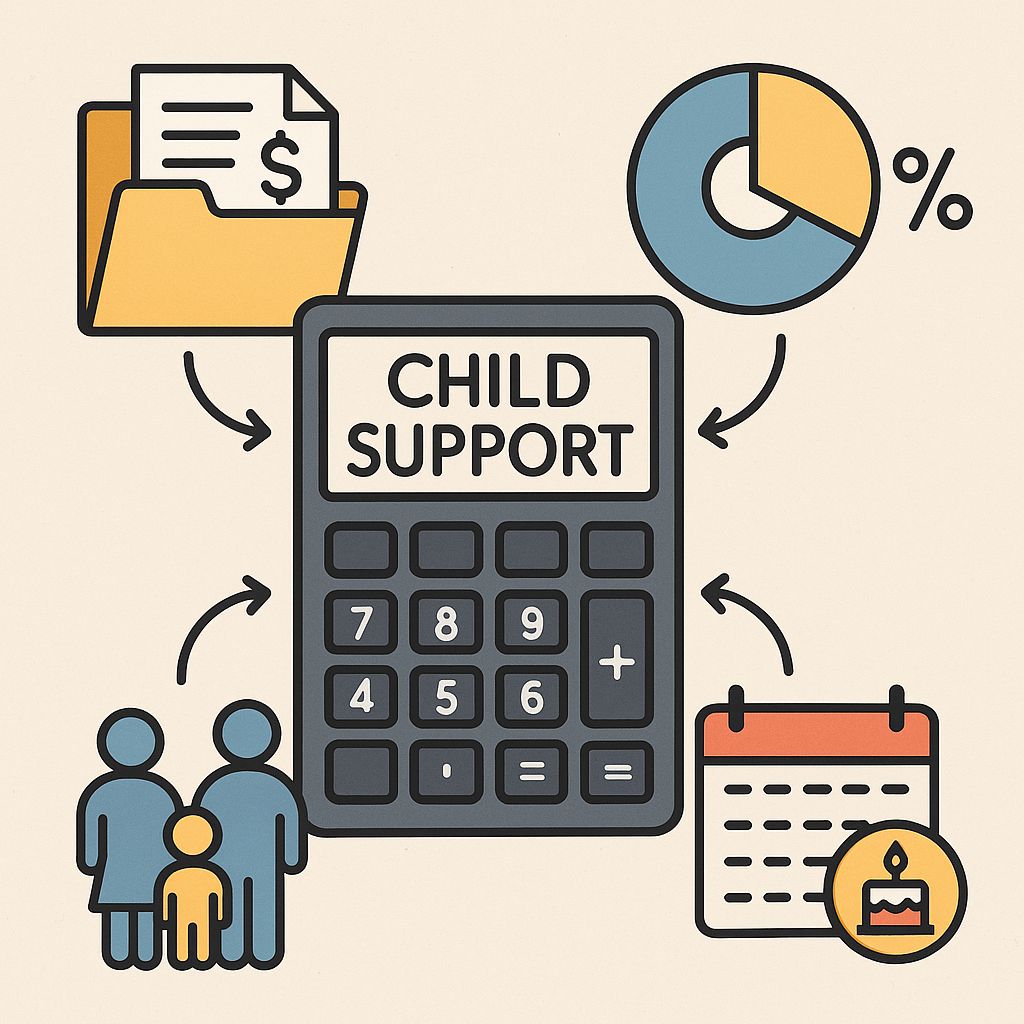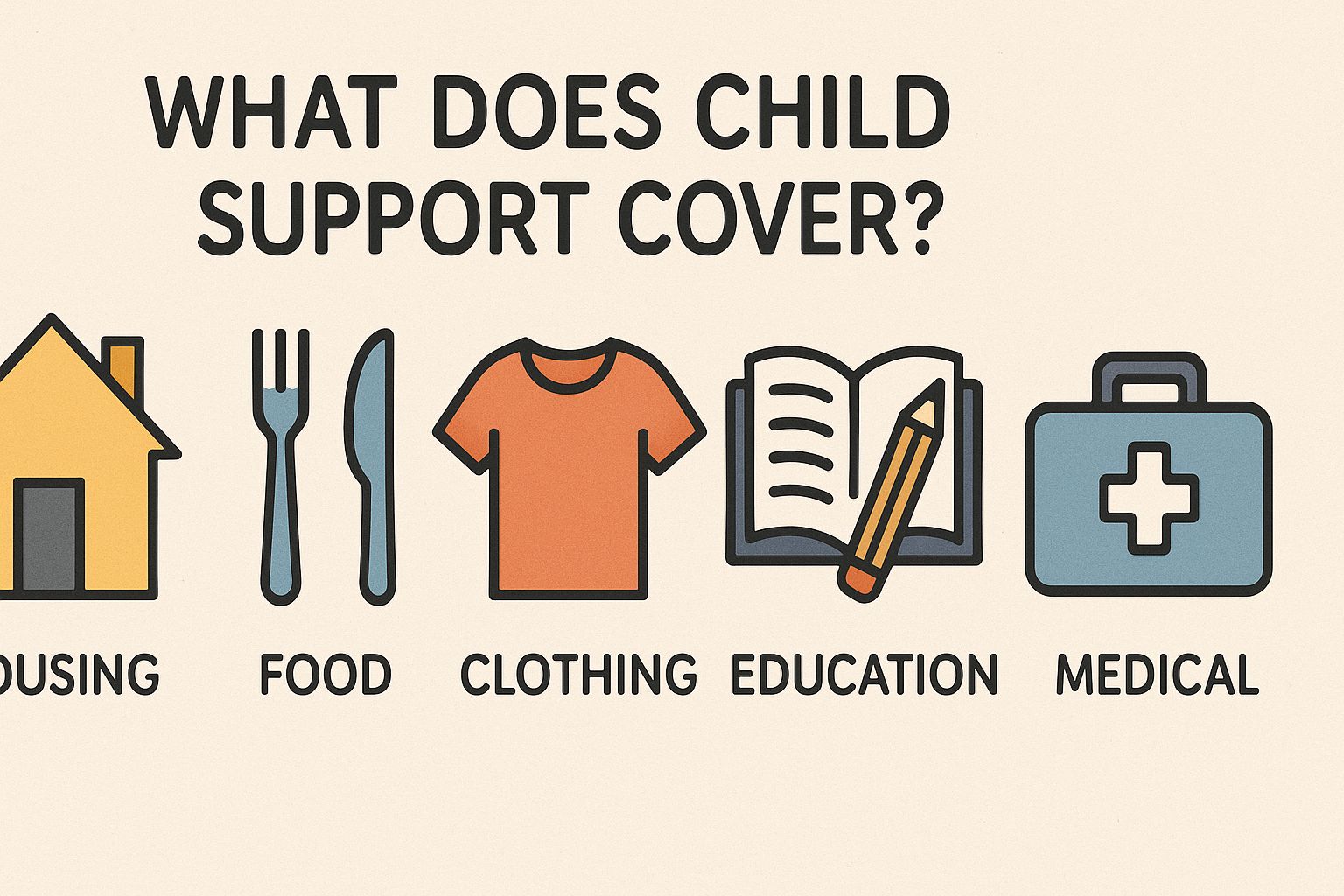Navigating Child Support in QLD: A Comprehensive Calculation Guide

Understanding how child support is calculated in Queensland is crucial for parents. It ensures you meet your legal responsibilities and, most importantly, contribute positively to your children's development and well-being. This guide will walk you through the essential aspects of child support in Queensland, addressing common concerns and equipping you with the knowledge to manage your obligations effectively.
1. Understanding Child Support in QLD: The Basics
Child support is a legal obligation for parents to financially contribute to the upbringing of their children after separation, regardless of whether they were married or in a de facto relationship. In Australia, including Queensland, Services Australia (formerly the Child Support Agency - CSA) is the primary government body responsible for administering the child support scheme. They assess, collect, and transfer child support payments. This system aims to ensure that financial resources are fairly distributed to meet children's needs, with both parents contributing according to their capacity.
The calculation of child support in Queensland follows a national formula legislated by the Australian Government. This formula considers:
Each parent's income
The number and ages of the children
The amount of time each parent cares for the children
The costs of raising children based on research.
Understanding this formula helps parents anticipate their potential obligations or entitlements. For more details, visit Family Law Section.
2. What Does Child Support Cover in QLD?
Child support payments are intended to cover the essential costs of raising children, ensuring they have access to resources for a healthy and balanced life. These generally include:
Housing: Contributing to the costs of a safe and stable home.
Food: Ensuring children have adequate nutrition.
Clothing: Providing necessary apparel for daily life and school.
Education: Basic school fees, books, and supplies.
Medical: Day-to-day medical expenses and health insurance contributions if applicable.
These payments aim to support the child's overall standard of living and prevent financial hardship due to parental separation. For family support resources, see Family Relationships Online.
What about additional expenses? Costs such as private school fees, extracurricular activities (e.g., sports, music lessons), or significant medical expenses not covered by routine care often fall outside the standard child support assessment. These are typically considered "non-agency payments" or can be formalised through a Child Support Agreement. Open communication and mutual agreement between parents are vital for sharing these additional costs. Learn more at Services Australia.
3. How is Child Support Calculated in QLD? The 8-Step Formula Overview
Services Australia uses a specific 8-step formula to calculate child support. While the full details are complex, here's a simplified overview of the core components involved:
Step 1: Calculate Each Parent's Child Support Income. This involves determining each parent's Adjusted Taxable Income (ATI). ATI includes taxable income, reportable fringe benefits, target foreign income, total net investment losses, reportable superannuation contributions, and certain tax-free pensions or benefits, minus a self-support amount. It's crucial to provide accurate and up-to-date income information to Services Australia.
Step 2: Calculate the Combined Child Support Income. The child support incomes of both parents are added together.
Step 3: Calculate the Percentage of Care. This determines how much care each parent provides for the child. It's usually based on the number of nights the child spends with each parent over a year. This percentage significantly impacts the child support calculation.
Step 4: Calculate Each Parent's Income Percentage. Each parent's portion of the combined child support income is determined.
Step 5: Calculate Each Parent's Cost Percentage. This reflects the share of the children's costs each parent is responsible for, based on their percentage of care.
Step 6: Calculate Each Parent's Child Support Percentage. This is the income percentage minus the cost percentage. A positive child support percentage means the parent may be assessed to pay child support. A negative percentage means they may be entitled to receive it.
Step 7: Calculate the Costs of the Children. Services Australia uses the "Costs of Children Tables" which are based on Australian research into average spending on children at different income levels and for different age groups.
Step 8: Calculate the Child Support Payable. The costs of the children are applied to the parent's positive child support percentage to determine the annual child support amount. This is then typically converted into a periodic payment (e.g., monthly or weekly).
Simplified View of Key Calculation Inputs:
| Factor | Description | Importance |
|---|---|---|
| Parents' Incomes | Adjusted Taxable Income of both parents. | Determines the financial capacity of each parent. |
| Costs of Children | Standardised costs based on combined income and number/age of children (using official tables). | Provides a benchmark for the children's financial needs. |
| Percentage of Care | The amount of time the child is in each parent's care (number of nights). | Reflects the direct contribution to day-to-day expenses and care. |
| Self-Support Amount | An amount deducted from each parent's income, considered necessary for their own basic living expenses. | Ensures parents can support themselves while also supporting their children. |
Note: This is a simplified representation. The actual calculation involves more detailed steps and considerations by Services Australia. For a detailed guide, visit Services Australia.

4. Factors That Can Influence Child Support Payments
Several factors can lead to a change in child support assessments:
Changes in Income: Significant increases or decreases in either parent's income (e.g., new job, promotion, job loss) must be reported to Services Australia.
Changes in Care Arrangements: If the number of nights a child spends with either parent changes significantly and regularly, this will alter the care percentage and impact the assessment.
New Dependent Children: If a paying parent has new biological or adopted children in their care from a new relationship, this can be considered in the assessment (relevant dependent child).
Age of Children: The costs of children change as they get older, which can affect the assessment amount, particularly when a child moves into a new age bracket in the "Costs of Children Tables."
Special Needs: If a child has special needs (e.g., significant medical expenses or educational requirements), parents can apply for a "Change of Assessment in Special Circumstances."
Table: Factors Influencing Child Support Payments
| Factor | Impact |
|---|---|
| Changes in Income | Adjusts payment amounts based on new financial capacity. |
| Changes in Care Arrangements | Alters care percentage, impacting payment obligations. |
| New Dependent Children | May reduce payments due to additional responsibilities. |
| Age of Children | Adjusts costs as children move into new age brackets. |
| Special Needs | May increase payments for significant expenses. |
For guidance on assessments, visit Queensland Government.
5. How to Apply for Child Support in QLD
The application process is managed nationally by Services Australia. Here’s a general guide:
Step 1: Determine Eligibility and Gather Information. You can find information on eligibility on the Services Australia website. You'll need details for yourself, the other parent, and your children (e.g., full names, dates of birth, IRD/tax file numbers if known).
Step 2: Contact Services Australia or Apply Online. The easiest way to apply is usually online through your myGov account linked to Centrelink/Services Australia. You can also call them or visit a service centre. Website: www.servicesaustralia.gov.au/child-support.
Step 3: Provide Necessary Documentation and Details. You will need to provide: Proof of parentage (e.g., birth certificate); Your income details (Services Australia often gets this from the ATO, but you may need to provide current payslips or estimates); Details of the care arrangements for the children; Your bank account details for payments.
Step 4: Submit the Application. Ensure all information is accurate and complete to avoid delays.
Step 5: Await Assessment. Services Australia will contact the other parent (if they haven't already been part of the application) and then issue a child support assessment. This will detail the amount payable, how it was calculated, and payment arrangements.
For application support, visit Services Australia or Legal Aid Queensland.
6. Frequently Asked Questions (FAQ)
Generally, yes. If you are a parent of a child and do not have primary care, you will likely have a legal obligation to contribute financially through child support. The amount is determined by the Services Australia assessment.
Payments are typically organized by Services Australia for collection and disbursement. They can be set up as weekly, fortnightly, or monthly. Parents can also have private collection arrangements if agreed.
If you believe the assessment is incorrect or unfair based on your circumstances, you have the right to object. You should contact Services Australia within the specified timeframes to discuss your concerns and lodge a formal objection. You may need to provide additional information. If still unsatisfied, there are further appeal processes. See Services Australia.
If you believe the other parent is not accurately reporting their income to Services Australia or the Australian Taxation Office (ATO), you can report this to Services Australia. They have investigation powers. Learn more at Australian Taxation Office.
Yes, parents can make their own child support arrangements through a Child Support Agreement. There are two types: Limited Agreements and Binding Agreements. Binding Agreements require both parents to have received independent legal advice. These agreements can be registered with Services Australia.
Generally, child support is payable until a child turns 18. It may extend beyond 18 if the child is still completing full-time secondary education in the year they turn 18. In some specific circumstances, an application can be made for adult child maintenance through the courts if the child requires ongoing financial support due to, for example, tertiary education or a disability.
No, child support payments are not considered taxable income for the parent who receives them, nor are they tax-deductible for the parent who pays.
Child support is a national service. You can contact Services Australia through their general Child Support line, which can be found on their official website (servicesaustralia.gov.au). There isn't a specific "QLD number" different from the national contact.
7. Conclusion: Ensuring Your Child's Well-being
Navigating child support calculations in Queensland, as part of the broader Australian system, is vital for fulfilling your parental duties. By understanding the formula, being aware of influencing factors, and utilizing the resources provided by Services Australia, you can manage your responsibilities with greater confidence.
Always maintain open communication with the other parent where possible, and promptly update Services Australia of any changes in your circumstances. Being proactive and informed not only helps you meet your legal obligations but also ensures a more stable and supportive financial environment for your children's growth and well-being. For additional resources, explore NSW Government, Victoria Government, Queensland Law Society, or Law Institute of Victoria.
AHL Legal: Your Child Support Partner
Need assistance with child support or family law matters? AHL Legal specializes in Queensland family law, offering expert guidance on child support, agreements, and disputes.
Support Your Children with Confidence
Navigating child support in Queensland can be complex, but with the right guidance, you can ensure your children’s financial needs are met.
Whether you’re applying for child support, disputing an assessment, or negotiating agreements, AHL Legal is here to provide expert support.
✅ AHL Legal: Your Trusted Family Law Partner
At AHL Legal, we specialize in family law, offering professional and compassionate assistance for child support and related matters. Our team ensures your obligations are clear and your children’s future is secure.
👉 Contact AHL Legal for a confidential consultation or call 1300 91 66 77.
🌐 Visit our website: www.ahllegal.com



 1300 91 66 77
1300 91 66 77







 HOME
HOME


